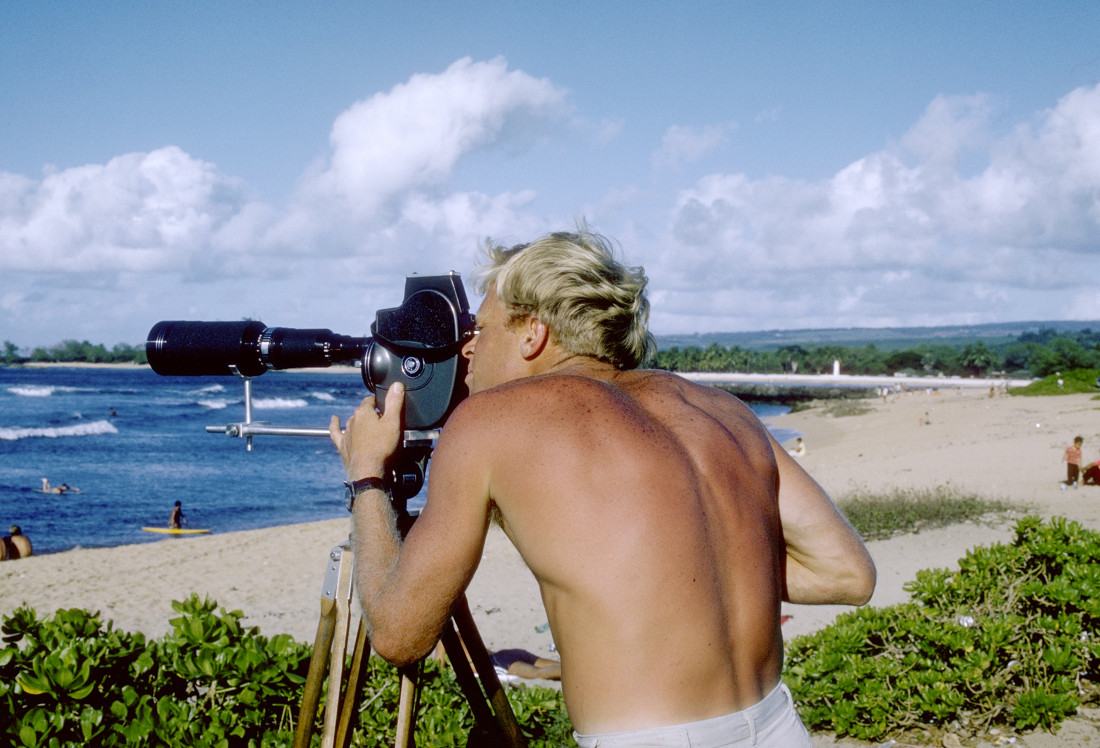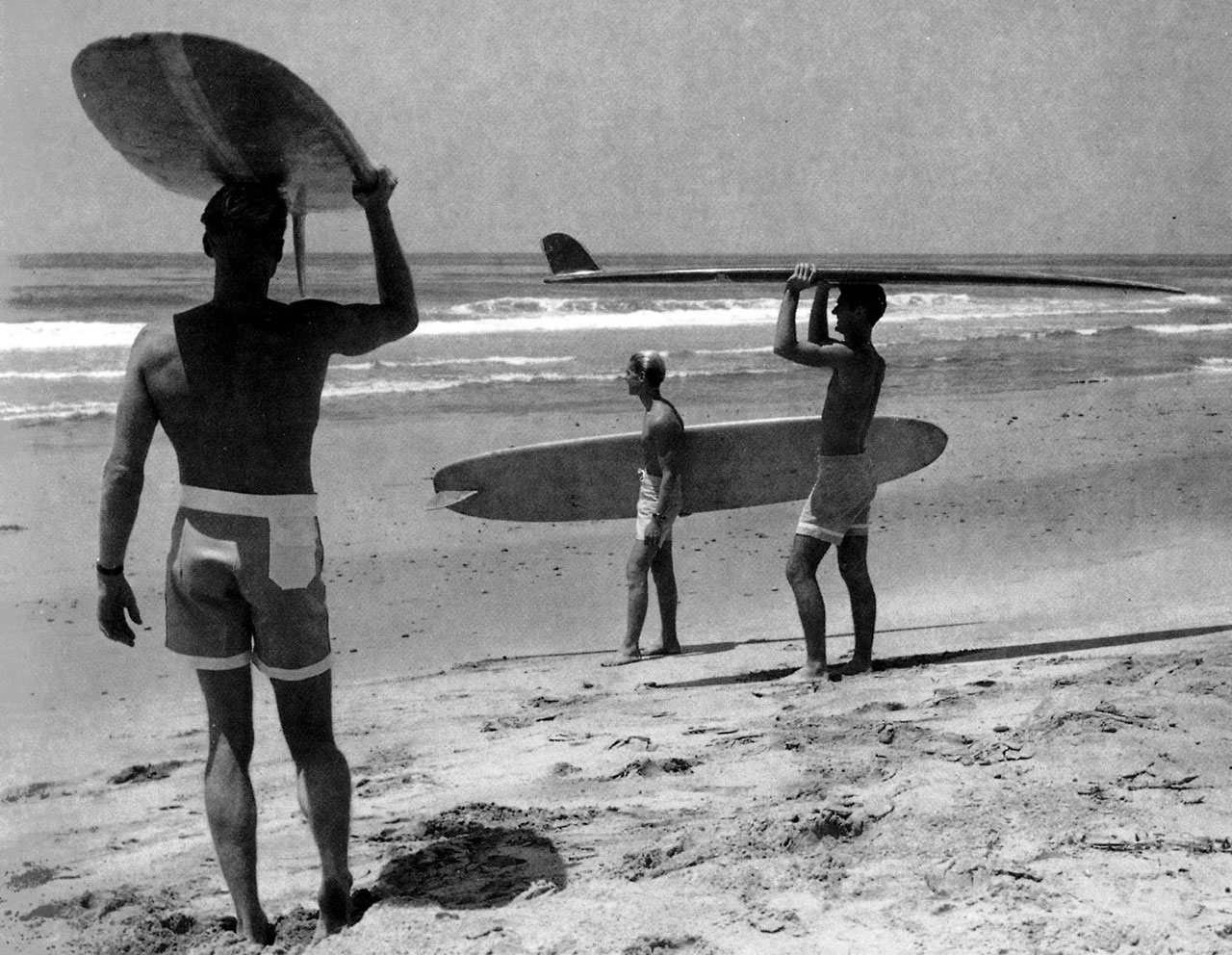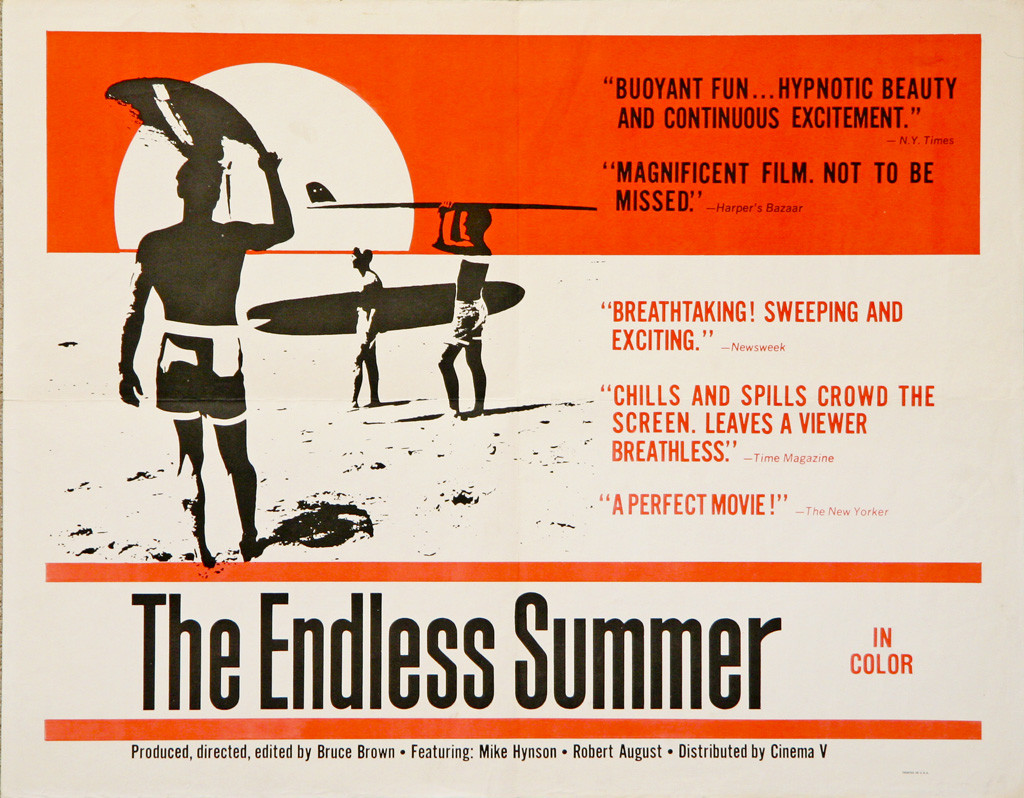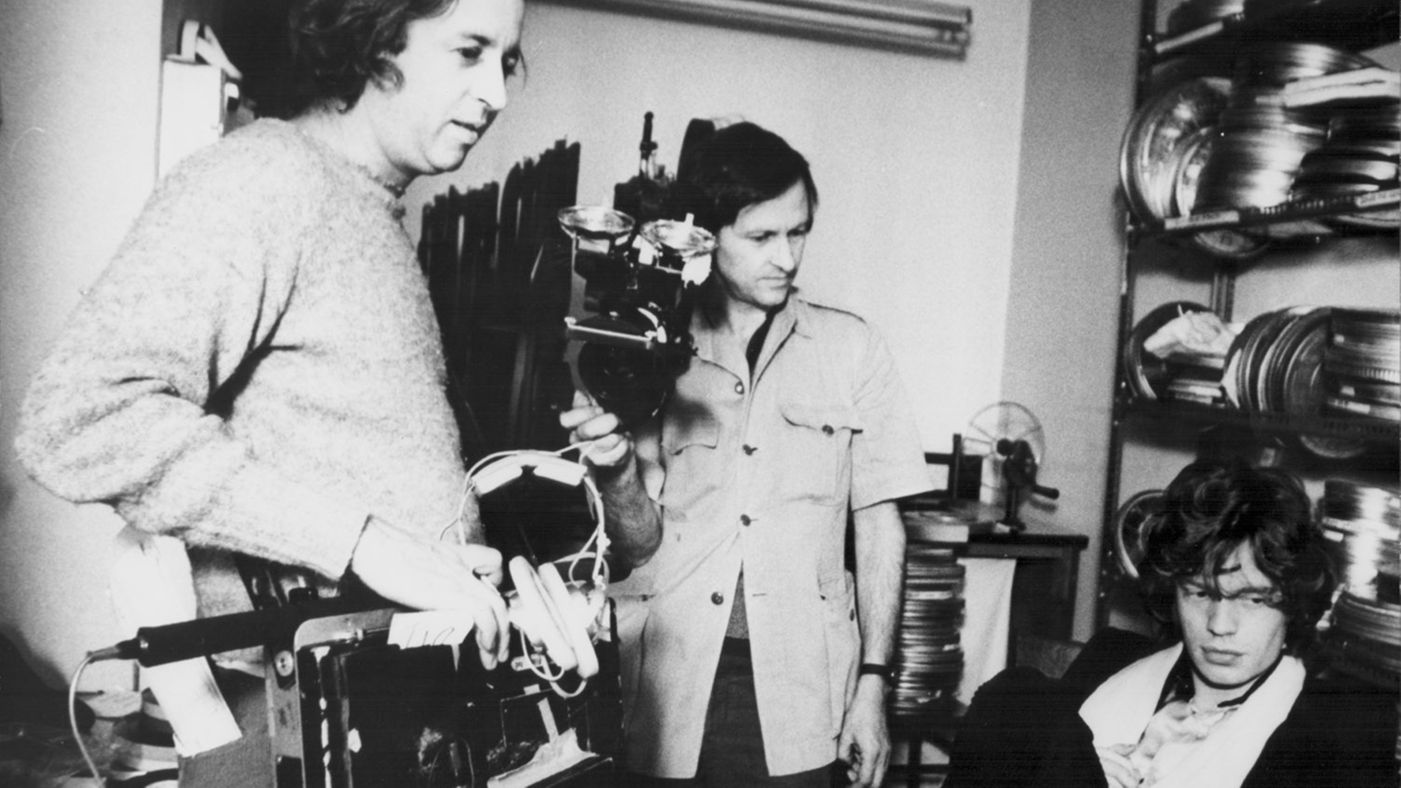How Does Iconic Surf Film “The Endless Summer” Fit Into the Documentary Tradition?
Quick Answer: California filmmaker Bruce Brown’s The Endless Summer was released in the right place at the right time. In the anxious haze of mid-Vietnam War America, the vivid cinéma vérité documentary provided audiences with the much needed opportunity for escape. The Endless Summer found major commercial success in the 1960s, a time when surf films were considered niche and cinema vérité films were unpopular in the mainstream.
In the iconic documentary The Endless Summer (1966), filmmaker Bruce Brown follows surfers Robert August and Mike Hynson to beaches around the world in pursuit of “the perfect wave.” The Endless Summer marks a turning point in the American documentary tradition; it was the first surf film to transcend the then-niche sport’s audience to win over the masses, and it was one of the first commercially successful cinéma vérité films in the United States. The immediate and enduring success of Brown’s film might have to do with the fact that it was released in the right place at the right time. In the anxious haze of mid-Vietnam War America, The Endless Summer offered an opportunity for escape. This is a strange function for a documentary, which is by definition concerned with the real. In its depiction of the unknown world of surfing — its hot pink sunsets and perfectly breaking waves — The Endless Summer looked less like nonfiction and more like fantasy.

Bruce Brown on set of The Endless Summer (1966)
The Endless Summer was Brown’s sixth film, but it was the first surf film of his or anyone else’s to find major commercial success. It was made on a $50,000 budget, it earned over $20 million in the box office, and still today, it is considered “timeless” by countless critics. But what separates The Endless Summer from the rest of Brown’s surf films? The most obvious difference is in setting. Brown’s first feature film, Slippery When Wet (1958), is set in Hawaii over the course of one summer, while The Endless Summer follows August and Hynson on an adventure spanning the shorelines of Africa, Tahiti, Australia, Hawaii, and New Zealand. The former film depicts surfers in a static setting; the latter follows surfers on an idealistic quest, achieving simultaneous escape and discovery.
Brown has said that his original plan was to film solely in South Africa, but his travel agent suggested a trip circumnavigating the world — because it was $50 cheaper. This now arbitrary-sounding deal was what led Brown to come up with the wanderlust concept that drives the film: to chase the summer season around the world, in nostalgic pursuit of a continual state of bliss, of an “endless summer.” This escapist force is not only what drives The Endless Summer forward, but also what attracted mass viewership outside of the California surfer niche. The world of surfing, unheard of aside from in the newly popular Beach Boys songs, was fantastically foreign to American audiences. The Endless Summer’s unfamiliar and hopeful narrative was easy for viewers to immerse themselves in, many of whom were frustrated in the midst of the seemingly never-ending Vietnam War (1955-1975). The film was released in 1966: at the peak of anti-war sentiment in the United States. On March 26th of that year, 20,000 protests were held in New York City alone.

The Endless Summer (1966)
The surfers of The Endless Summer seem to fulfill their wanderlust — they look blissful exploring unknown territory on their boards — and the film’s stylistic elements work together to build a strong sense of atmosphere for viewers. Vivid shots of crashing waves and romantic pink and orange sunsets are complemented by Brown’s laid back narration along with music by surf rock band The Sandals. The style of the film is fitting for its content, which is low-stakes yet packed with action.
While film theorists have long disagreed about the definition of cinéma vérité and what films are part of its tradition, I consider The Endless Summer to be one of the earliest and most successful cinéma vérité documentaries in the United States. Cinéma vérité, which roughly translates to “film truth,” was developed by French filmmaker-anthropologist Jean Rouch. He used the term to describe Chronique d’un Eté (1961), a film he made in collaboration with sociologist Edgar Morin that portrays social life in 1960 France through a series of interviews. As defined by Stephen Mamber, author of Cinéma Vérité in America, “[Cinéma vérité] is an attempt to strip away the accumulated conventions of traditional cinema in the hope of rediscovering a reality that eludes other forms of filmmaking and reporting.” The goal is essentially to break down the barrier between filmmaker and viewer — eliminating fictional elements such as scripted scenes, premeditated structures, costumes, and camera crews — that is, removing both literal and metaphorical makeup from the narrative — in an attempt to get closer to a documentary subject’s truth. The Endless Summer reflects many of cinéma vérité’s founding principles. Brown shot the film on a low budget using a handheld Technicolor camera with no sound capabilities, and the film reflected Brown’s personality through his conversational style of storytelling: a rejection of the stiff documentary styles of the 1950s.

The Endless Summer (1966)
There is an important distinction to be made between the traditions of cinéma vérité and its contrasting counterpart, “direct cinema.” The terms are often used interchangeably, but their respective goals conflict. Direct cinema is an offshoot of cinéma vérité that was championed by Albert and David Maysles, the famous American filmmakers behind Gimme Shelter (1970) and Grey Gardens (1976). As stated on New York Film Academy’s website, “[the Maysles brothers] believed the documentarian was an objective observer, a completely invisible passivist as opposed to a director or participant.” The Maysles strived to unveil a subject’s truth through a total lack of intervention, treating the camera as a kind of secular Eye of Providence, a fly on the walls of the subject’s life. Direct cinema and its pursuit of objective truth has been challenged by several film theorists including cinéma vérité’s founder Rouch, who believed that objective truth was an impossibility in face of the camera — the ultimate source of provocation. But Rouch was inherently interested in how this provocation “reveals people’s true selves as creatures of fantasy” (NYFA), and the ways in which the cinéma vérité films reflects their makers.
In Cinéma Vérité in America, Mamber explains that the term cinéma vérité “has been debased through loose critical usage,” but that in all of its forms, the essential element is “the act of filming real people in uncontrolled situations…In a cinéma-vérité film, no one is told what to say or how to act.” The most obvious difference between the two branches of the documentary movement is the conscious invisibility of the filmmaker in direct cinema, versus the acknowledgment of the relationship between a filmmaker and his subject in traditional cinéma vérité.
In The Endless Summer, both Brown’s presence as narrator and the semi-premeditated plot — the quest for the perfect wave — demarcate its place in the cinéma vérité camp as opposed to in direct cinema. Brown narrates the story as if he is relaying it to a good friend, and the casual tone of his delivery is fitting for the content. Critics often refer to The Endless Summer as “timeless,” but Brown’s narration has been criticized as “corny,” “eye-rollingly hokey,” and most importantly, out of date. Brown refers to the local people they meet on the shores as “natives” and “good Africans,” jarring viewers who revisit the work today. But it’s important to remember that The Endless Summer is a product of its time: it does not portray objective truth, but the truth of a specific filmmaker living in a particular era, the early 1960s, when world travel was uncommon and American people were much less globalized than they are today.

David and Albert Maysles on set of Gimme Shelter (1969)
The Endless Summer found surprising commercial success as a documentary that mixed the sport of surfing with cinéma vérité, in a time when surf culture was unfamiliar to many Americans and cinéma vérité films unpopular in the mainstream. The film fulfilled the general audience’s craving to escape in the frustrating political climate of the 1960s. In a hilarious 1971 article titled “Moviegoers Don’t Like Cinéma Vérité” published in The Day, journalist Linda Deutch discusses the negative response to cinéma vérité films in theaters:
“Recent cinéma vérité films such as ‘Derby’… and ‘Saturday Morning,’ an excruciating closeup of teenage emotional traumas, are too real for comfort. ‘People don’t want to go to the movies to see themselves. They don’t want to pay money to be emotionally abused,’ says Herb Michaelson, who helped promote ‘Derby’ and has rave reviews but only meagre box office receipts.”
Deutch notes that the only successful cinéma vérité products focused on subjects of entertainment, such as Woodstock (1970) and the previously referenced Gimme Shelter. She also discusses current moviegoers’ strong appetite for fantasy. This mainstream’s distaste for the dramatic, the “too real,” and preference for the fantastical illustrates how The Endless Summer was released in the right place at the right time, providing much needed secondhand escape. The major success of The Endless Summer presents an interesting paradox: the audiences wanted nothing to do with the “too real,” and that was just what they got — a documentary in fantasy film’s clothing.

